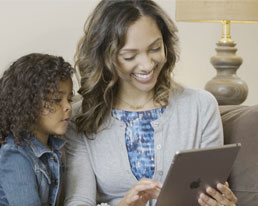caring for complex burns and wounds
Physicians and nurse practitioners at Dayton Children’s provide personalized, outpatient care for children whose burns cover less than 50 percent of their body surface, and children who have complex, non-healing wounds. We offer the latest in dressings (bandages), grafting procedures, pain management techniques and reconstructive surgery.
Caring for a child with burns or non-healing wounds can be stressful for parents. To lessen the emotional toll, our clinic team takes care of all dressing changes while a child is healing. Families typically visit the clinic twice a week for dressing changes and follow-up care. Our caring staff provides extensive education to help parents meet their child’s needs at home.
The Dayton Children’s burn and wound care team offers long-term follow-up care, keeping a close eye on the injury site as the child grows. If scar tissue begins to limit movement and function, our team can recommend treatment to minimize the effects.
Sometimes, surgery is necessary. This can include surgery to clean the burn or wound site, reduce scar tissue and can include a skin graft, which involves transplanting healthy skin from one area of the child’s body to another. In select cases of acute wounds/burns, and in some reconstructive procedures, synthetic replacement products are utilized.

did you know?
- Burns occur more often in boys than girls.
- The average age of a patient with burns is five years old.
- Most children who are admitted to Dayton Children’s for burn care have a burn that covers 10 percent or less of their body surface.
- The most frequent burn in younger children is a scald, often from boiling liquids pulled from counters or heated in the microwave. In older children, most burns are caused by an open flame.
- Treadmill friction burns are becoming more and more frequent.
burn prevention tips:
- Keep hot foods and drinks away from the edge of tables and counters. Do not put them on a tablecloth that little hands can yank.
- If you're holding something hot, don't hold your child, too.
- When you cook, keep your child away from the stove.
- Turn pot handles toward the back of the stove. If possible, use rear burners.
- Watch for dangling appliance cords.
- Test heated food and liquids before serving children.
- Always check the water temperature before placing your child in the tub. A child's skin burns more easily than an adult's.
If it’s too late…
- Remove the hot, wet clothing—don't forget to check and remove an infant's diaper if it has absorbed hot liquids.
- Cool the burned area immediately with room-temperature tap water.
- Do not use ice or very cold water. Ice or very cold water will further damage burned skin.
- Cooling should only take a few minutes. Do not over-cool the area. Carefully touch the burned area. When the burned area is the temperature of the unburned skin, you have cooled enough.
- Gently dry the area and cover burn with a clean, dry bandage or towel.
- Do not use butter, first aid ointment or burn cream. These items tend to retain heat and cause more pain.
- Keep the burned victim warm while you transport them to hospital or wait for emergency services to arrive. Cover with a blanket. Burned skin loses body heat rapidly—even in warmer months.


